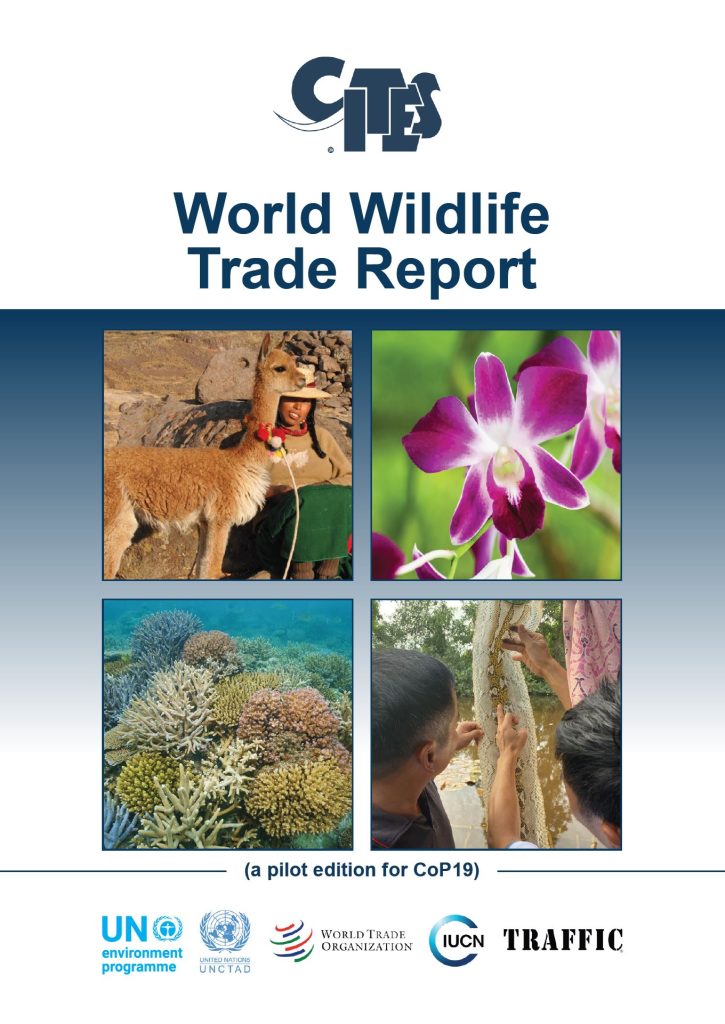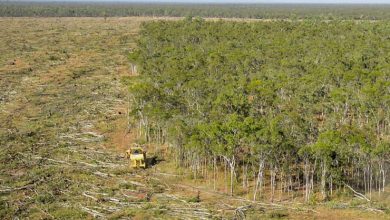The Trade Report That Isn’t A Trade Report

The first thing to say about the CITES World Wildlife Trade Report is that it isn’t a trade report, it is an overview of the current CITES export data, with an attempt to put a price on some of the trade, based on using proxy data from the US and a number of retail and wholesale websites.
Much can be gleaned about the usefulness (or not) of the report simply by reading the Foreword by Ivonne Higuero, CITES Secretary-General.
In the foreword Higuero states, “This World Wildlife Trade Report is a first attempt to provide as comprehensive an overview of wildlife trade as possible”. So, the first question must be, given CITES is a trade convention, why has it taken nearly 50 years to make a first attempt to write the first report they consider to be a World Wildlife Trade Report?
Higuero, goes on to say in the foreword “As CITES approaches its 50th anniversary, it is timely to have a clearer picture of the global wildlife trade regulated under the Convention”. Actually, no it isn’t timely, it is 50 years late and as a result of the report being 50 years too late, direct exploitation for trade has become the most important driver of decline and extinction risk for marine species and the second most important driver for terrestrial and freshwater species, as confirmed by the 2019 IPBES Report.
The decline and extinction risk due to trade has been missed for the some of the rarest species on the planet, those listed for CITES trade restrictions, because there has been no useful trade analytics or regular trade report.
Before discussing any other aspects of the report, let’s jump to a comment made by Higuero towards the end of the foreword, “it is evident that there are limitations in collecting and analysing the data and further inputs are required if we are to make such reports even more useful”. This statement is made because of the poor quality of the CITES trade date. In 2019, Nature Needs More asked trade analytics experts to look at the CITES data, their response was that it was the worst trade data source they had ever seen.
Higuero’s comments about the “limitations in collecting and analysing the data” completely invalidates her earlier statement in the foreword, “This World Wildlife Trade Report is a first attempt to provide as comprehensive an overview of wildlife trade as possible from all angles”. This is frankly a ridiculous statement because nothing in this report could be classed as “comprehensive” or “from all angles” because of the lack of data and the poor quality of the little data that exists.
So, what makes the data of such poor quality? Incomplete data is bad data, it is worse than nothing and CITES is trade system regulator that doesn’t know what it doesn’t know about the trade. As the report itself explains the analysis is done based on ,“data of exporter reported direct trade in species listed in Appendix I, II and III, which are recorded in the CITES Trade Database. Re-exports of animals and plants that were previously traded internationally (indirect trade) are excluded in order to avoid double counting of quantities.”. No importer data is included, because for example importer data isn’t mandated for CITES Appendix II listed species. The most basic export/import reconciliation can’t be done.
In the foreword Higuero also states, “The report highlights some of the methodological and data challenges associated with providing a definitive assessment, but nevertheless provides clear illustrative insights into the nature, scale and various values of the trade and some of its impacts both on people and wildlife.”
After 50 years, are “clear illustrative insights” enough? CITES exists to make sure that trade in endangered species is sustainable, if you lack visibility of the true trade flows and can’t reconcile reported quantities, this objective is not achievable.
From a commercial and trade analytics perspective, what is useful in this report can probably be captured on one page, the rest is perception management. And let’s face it, CITES has had 50 years of honing how to do perception management. What is truly sad is how few people have called them out on this.
For such trade reports to become useful and for CITES to really protect endangered species from overexploitation through international trade we need the CITES permit and trade data collection to be brought into the 21st century. That means, as a first step, all countries adopt electronic permits fully integrated with customs, trade reporting is done in real-time, price data are included for all shipments and import reporting becomes mandatory. None of that is hard to do, what is lacking are political will and the (very little) money needed to do it.

Lynn Johnson is a physicist by education and has worked as an executive coach and a strategy consultant for over 20 years. In her work she pushes for systemic change, not piecemeal solutions, this includes campaigning for modernising the legal trade in endangered species, to help tackle the illegal wildlife trade.






